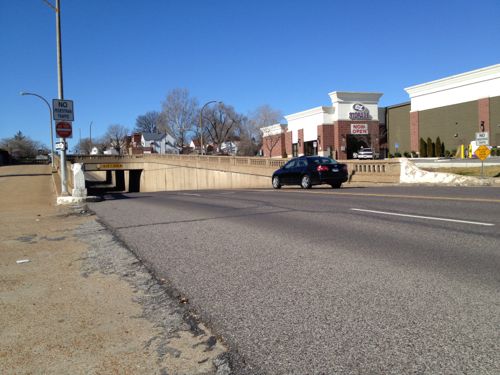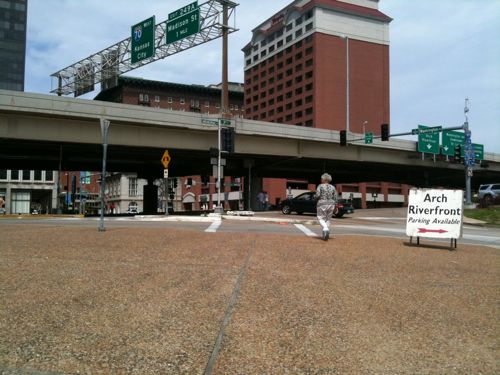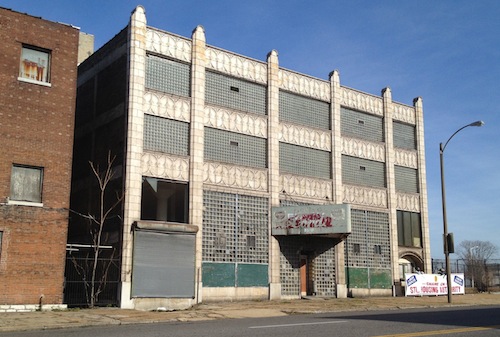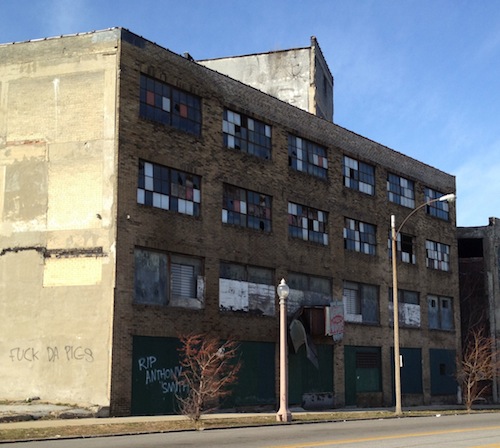New Thinking Was on Display at St. Louis Auto Show
In May 2008 I found myself car shopping. I could no longer ride my 90mpg scooter so I wanted a fuel efficient car. Gas prices had been climbing for months:
I was shopping for used a car but I found myself angered at the selection of new vehicles being offered:
Today Ford, GM and Chrysler are caught with too many trucks and SUV’s in showrooms as sales of these segments decline in the double digits. Toyota has passed Ford for the #2 sales position in the U.S. Honda is set to pass Chrysler for #3.
Why does it matter? Well the auto industry is an important part of our national economy. Many thousands of workers build the cars and many others work for suppliers to the industry. Until we can shift these people to other jobs a large part of the economy depends upon all of us doing our part and buying a new vehicle. But with the new reality of $4/gallon +/- gas consumers are finally rejecting trucks and SUVs. Frankly the U.S. economy is to reliant upon sales of autos and of new mostly suburban homes. (full post)
It wasn’t long before both GM & Chrysler were in bankruptcy and Ford was mortgaged to the roof and selling off brand after brand like Aston Martin & Volvo. All three were finally forced to rethink how the design, build and sell cars in a global economy. The government finally pushed the auto industry to higher standards:
The Corporate Average Fuel Economy (CAFE) mandate was first established in 1975 and until this past April 1 [2010] has changed little since. It’s been years of debate, but finally, the standards have been significantly updated. By model year 2016, the fuel efficiency of the new vehicle fleet sold in the United States will have to average at least 34.1 miles per gallon. [Popular Mechanics]
The fact is automakers had been making great improvements in efficiency for decades
Specifically, between 1980 and 2006, the average gas mileage of vehicles sold in the United States increased by slightly more than 15 percent — a relatively modest improvement. But during that time, Knittel has found, the average curb weight of those vehicles increased 26 percent, while their horsepower rose 107 percent. All factors being equal, fuel economy actually increased by 60 percent between 1980 and 2006, as Knittel shows in a new research paper, “Automobiles on Steroids,†just published in the American Economic Review (download PDF). [Source: MIT News]
If we still drove 1980 sized vehicles the automakers could exceed the 2016 CAFE requirement, per the above source. But with creative thinking and using technology used around the world the higher standard can be met:
The Hyundai brand has met the federal government’s Corporate Average Fuel Economy (CAFE) standards four years ahead of the 2016 deadline, achieving an average of 36 mpg across its model lineup, according to WardsAuto. But there are some who have taken issue with the EPA’s estimates of Hyundai vehicles, and have petitioned for a re-test of the 40- highway-mpg Elantra. Hyundai America CEO John Krafcik stands behind the Elantra’s mpg rating, however, saying the numbers are achievable in the real world. [Source: Motor Trend]
At the St. Louis Auto Show last week, new more efficient vehicles were on display. Click the image to see the official website for each vehicle.
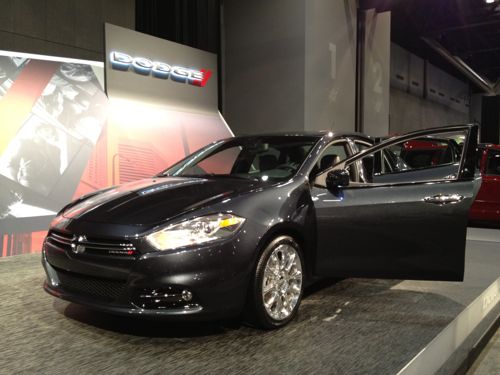
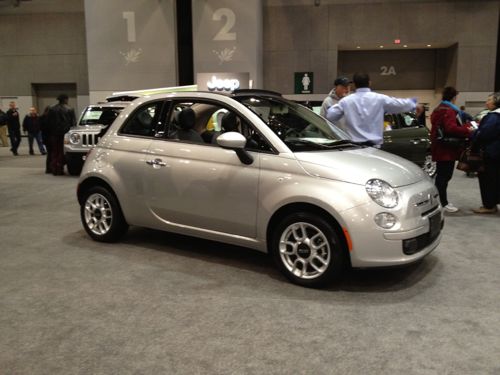
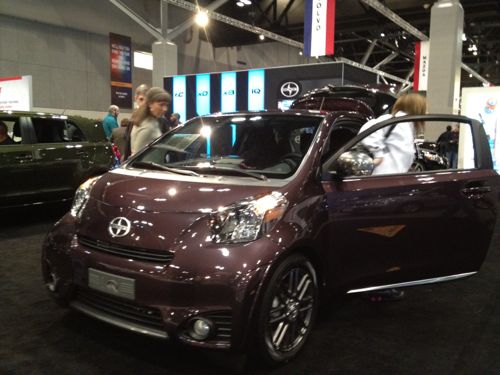
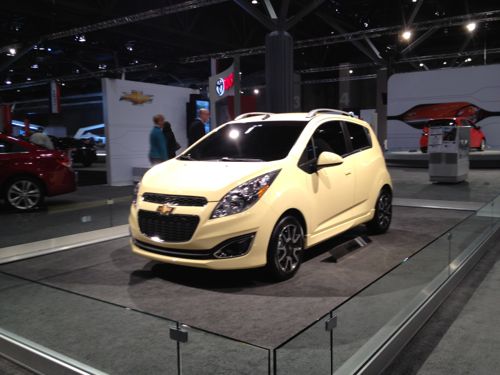
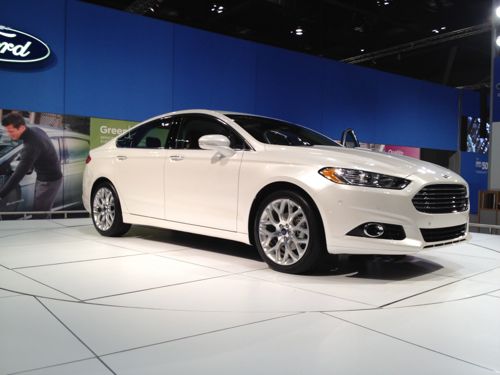
For decades companies like Ford built models specifically for the U.S. market that had no resemblance to European models. This increased development costs and gave U.S. consumers subpar vehicles. Those days are gone.
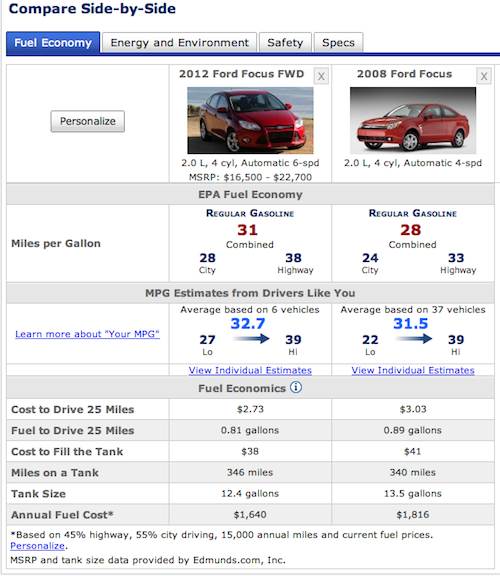
The 2012 Ford Focus is a global Ford, whereas the 2008 Ford Focus had nothing to do with European models. The gains in fuel economy speak for themselves. Over at GM a similar story is told.
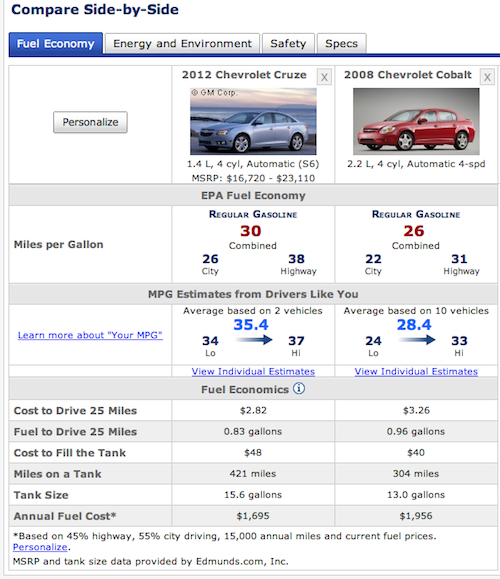
Chevrolet made strong gains with the Cruze that replaced the Cobalt.
President Obama has proposed a CAFE standard of 54.5mpg by 2025, coinciding with new regulations in California:
The Environmental Protection Agency and the National Highway Traffic Safety Administration have estimated that the improved technology would add $2,030 to the average vehicle purchase price, but that lifetime cost savings for fuel would exceed $6,000, for a net savings of more than $4,000 over the life of a new vehicle. The NADA disagrees with those figures and plans to release its own study next month that estimates a total price increase per vehicle of up to $5,000. [MSN]
With the economy rebounding fuel prices are expected to reach $4/gallon this summer. This time automakers will have vehicles that meet buyer expectations. When I’m ready to buy my next used car I’ll have better choices  than I had in 2008.
– Steve Patterson


